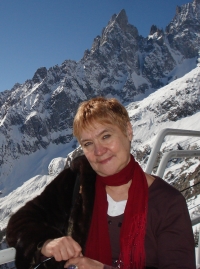
Position: Deputy Head of Department of physics of biological systems
Institution attended: Institute of Physics, NAS Ukraine
Scientific interests: Biophysics, Nucleic acids, Solid State Physics, Surface Solids, experimental physics-FTIR, SEIRA, UV, Raman, SERS, NMR spectroscopy, Langmuir-Blodgett technique, AFM microscopy, computational chemistry, nanotechnology, single walled carbon nanotubes, C60 and the complexes.